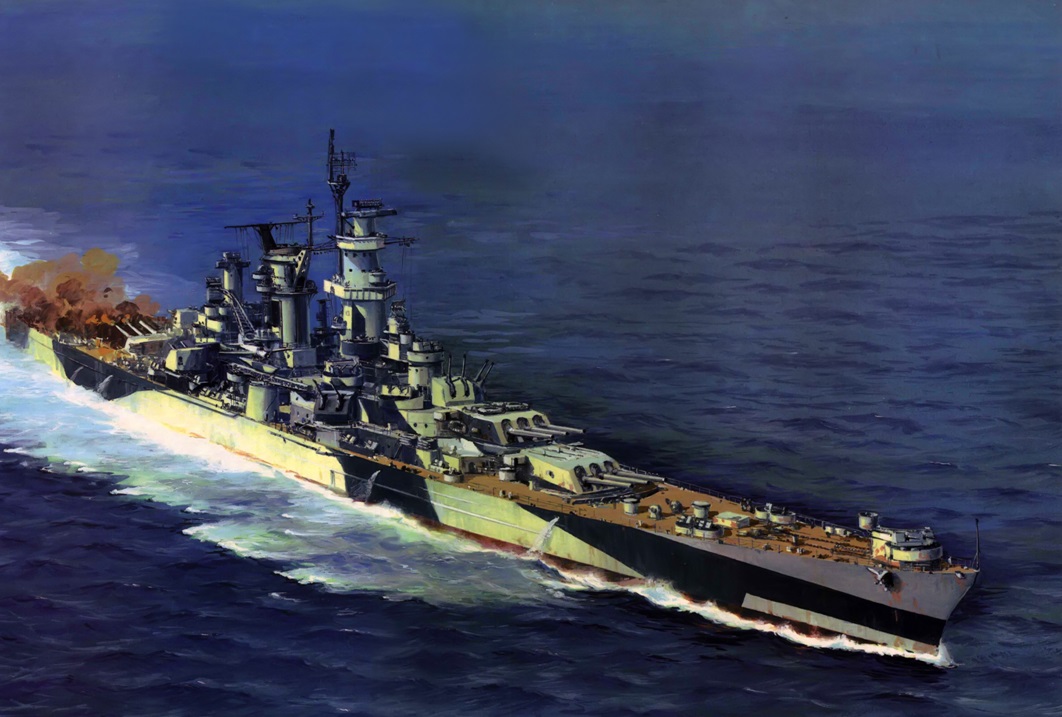
Missed project. Great Alaska-class cruisers part 2
The large cruiser USS Alaska during a training voyage in August 1944. NHHC
The ships considered here belonged to a heterogeneous group of 10 more or less similar projects with characteristics that differed significantly from the fast battleships so characteristic of the 30s and 40s. Some were more like small battleships (the German Deutschland class) or enlarged heavy cruisers (like the Soviet Ch project), others were cheaper and weaker versions of fast battleships (the French Dunkirk and Strasbourg pair and the German Scharnhorst "and" Gneisenau "). The unsold or unfinished ships were: the German battleships O, P and Q, the Soviet battleships Kronstadt and Stalingrad, the Dutch battleships of the 1940 model, as well as the planned Japanese ships B-64 and B-65, very similar to the Alaska class ". In this section of the article, we will look at the history of the operation of these great cruisers, which, it must be clearly stated, were a mistake by the US Navy.
The prototype of the new cruisers, designated CB 1, was laid down on December 17, 1941 at the New York Shipbuilding shipyard in Camden - just 10 days after the attack on Pearl Harbor. The new class of ships was named after the dependent territories of the United States, which distinguished them from battleships called states or cruisers called cities. The prototype unit was named Alaska.
In 1942, the possibility of converting new cruisers into aircraft carriers was considered. Only a preliminary sketch was created, reminiscent of the Essex-class aircraft carriers, with a lower freeboard, only two aircraft lifts, and an asymmetrical flight deck extended to port (to balance the weight of the superstructure and medium gun turrets located on the starboard side). As a result, the project was abandoned.
The cruiser hull was launched on July 15, 1943. The wife of the governor of Alaska, Dorothy Gruning, became godmother, and commander Peter K. Fischler took command of the ship. The ship was towed to the Philadelphia Navy Yard, where fitting out work began. The new commander, having combat experience with heavy cruisers (he served, among other things, in Minneapolis during the Battle of the Coral Sea), turned to the Naval Council for comments on the new ships, wrote a long and very critical letter. Among the shortcomings, he mentioned the overcrowded wheelhouse, the lack of nearby naval officers' quarters and navigational quarters, and an inadequate signal bridge (despite the suggestion that it was intended to act as a flag unit). He criticized the insufficient power of the power plant, which did not give any advantage over battleships, and unarmored chimneys. Placing seaplanes and catapults amidships, he considered a waste of space, not to mention limiting the angles of fire of anti-aircraft artillery. He called for them to be replaced by two additional 127 mm medium artillery turrets. He also predicted that the CIC (Combat Information Center), located below the armored deck, would be as crowded as the wheelhouse. In response, the head of the Main Council Cadmium. Gilbert J. Rawcliffe wrote that the place of the commander was in an armored command post (an idea completely irrational in the realities of 1944), and in general, a large and modern ship was transferred under his command. The layout of the weapons elements (centrally located 127- and 40-mm guns), as well as the control and management of the ship, were the result of compromises made at the design stage.
On June 17, 1944, the large cruiser Alaska was officially included in the US Navy, but the equipment and preparation for the first trial voyage continued until the end of July. It was then that the ship entered the Delaware River on its own for the first time, passing on four boilers all the way to the bay leading to the open waters of the Atlantic. On August 6, a training flight started. Even in the waters of the Delaware Bay, trial firing from the main artillery gun was carried out to identify possible structural defects in the hull structure. After their completion, Alaska entered the waters of the Chesapeake Bay near Norfolk, where in the following days all possible exercises were carried out to bring the crew and ship to full combat readiness.
At the end of August, Alaska, along with the battleship Missouri and the destroyers Ingram, Moale and Allen M. Sumner, withdrew to the British islands of Trinidad and Tobago. There, joint exercises continued in the bay of Paria. On September 14, the crews were trained to act in various emergency situations. In one test, Alaska towed the battleship Missouri—reportedly the only time a cruiser towed a battleship. On the way back to Norfolk, a mock bombardment of the coast of Culebra Island (Puerto Rico) was carried out. On 1 October, the ship entered the Philadelphia Navy Yard, and by the end of the month had been inspected, refitted (including four missing Mk 57 AA gunsights), minor repairs, and modifications. One
one of them was the addition of an open pier around the armored command post (it was on Guam from the very beginning). However, due to the firing angles of the forward medium gun turret, it was too narrow to be used as a battle bridge, as was the case on the Iowa-class battleships.
On November 12, the cruiser went on a short two-week exercise to Guantanamo Bay in Cuba. During the voyage, the maximum speed was checked and a result of 33,3 knots was achieved. On December 2, Alaska, accompanied by the destroyer Thomas E. Fraser, went towards the Panama Canal. On December 12, the ships reached San Diego, California, on the US East Coast. For several days, intensive exercises were held in the San Clemente Island area, but due to interfering noises from mine 4, the device was sent to the San Francisco Navy Yard, where it entered the drydock for inspection and repairs. There the crew met the new year, 1945.